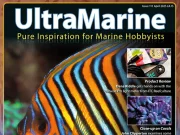In previous articles we covered topics like phytoplankton and its characteristics and role in marine food chains in tropical, sub-tropical and arctic environments.
This article is also available in: italiano
Zooplankton: the animal component of plankton
In this first specific article on zooplankton, I will talk about those organisms that can be cultured for the use in our tank.
Zooplankton is made up of animal organisms which feed on phytoplankton (the plankton algae component), and are freely living in the water column or near the substrate. While organisms such as jellyfish are also part of the pelagic zooplankton, we will not consider them as they are of no interest for reef tanks hosting long polyp stony corals (LPS) and short polyp stony corals (SPS).
The vast diversity of Genus and species that can be considered zooplankton does not allow us to produce an exhaustive essay, that’s why I will linger on those few species that are actually useful in the tank management for the hobbyist. Zooplankton can be essential for keeping those animals with specific feeding requirements such as all Genus belonging to the family Callionymidae (eg. Sinchyropus), they feed on copepods and other similar organisms and do not usually accept to eat industrial food, at least initially. Another example even more extreme is that of the Genus belonging to the family Syghathidae, with their best representative the seahorse (Hiipocampus spp.), even though they are not usually kept in a reef tank.
Zooplankton of the right dimension can be also very useful in tanks with SPS corals which are also heavily populated, while it is less useful in LPS tanks with bigger and slower moving animals.
The most important organisms for a reef tank belong to few groups such as Ciliates, Rotifers and Crustaceans. Crustaceans in zooplankton are represented by Calanoida and Harpacticoida with some species of Cladocera, represented by Moina and Daphnia. To the order Mysida belongs one of the most famous frozen food Mysis.
Here in this first section I will not mention ciliates, as they will be covered later and I will refer to them as a possible problem for phytoplankton cultures, even though they could be successfully used in tanks for feeding some species of marine fishes.
Rotifers
Let’s begin with rotifers, whose only useful members for our aims is called Brachionus plicatilis for marine tanks and Brachionus calicyflorus for freshwater tanks. Both species belong to the same genus and are very similar, the main difference stands in the dimension, B. plicatilis being smaller than B. calycyflorus, and the water they can live in.
Above, we can see a rotifer pictured by a microscope with a 200x enlargement. The real dimension of this creature is around 300 µm (0,3 mm). The organism is made of a mouth surrounded by a crown of cilia. The cilia rotate generating a flow which allows them to capture food particles that can be then transferred to the simple digestive tract. In this picture we can see the rotifer body, one external round particle, and a mobile “tail”, one end of the tail can secrete an adhesive substance that allows the animal to temporarily stick to the substrate. In situation like intensive breeding the organisms do not attach to any substrate hence the tail does not secrete this substance.
The nutritional value of these organisms is very contained and represented almost exclusively by the presence of microalgae in their digestive tract. If the nutritional value of those microalgae is low there are supplements product that are not so easy to find in the hobby as they are mainly available for professional use. The best solution in this case is the use of a mixture of phytoplankton species for feeding our rotifer cultures which will increase their nutritional value. The use in reef aquariums can be a little useful for small polyp (SPS) corals, that can actively pray the floating rotifers transported by the movement pumps, while is rather important the use in the early larval phase. You can understand how having a high density of animals per unit is fundamental in both cases. My average density is about 60 individuals per millimeter, but some people reached 80/100 specimens with the same volume.
Breeding rotifers comes after breeding phytoplankton. Obtained a phytoplankton with high density of algal cells, after the right time of absorption and consumption of the new compounds in the breeding, you inoculate a certain quantity of living rotifers in the same container. The rotifers will exponentially grow by consuming the present algae, making the container clear again.
It’s fundamental to keep the algae breeding, and the rotifers, in constant movement during their growth phases, first in order to keep an elevate production of oxygen, but also to keep their concentration as uniform as possible.
On page two we will consider the various genus of copepods.



















